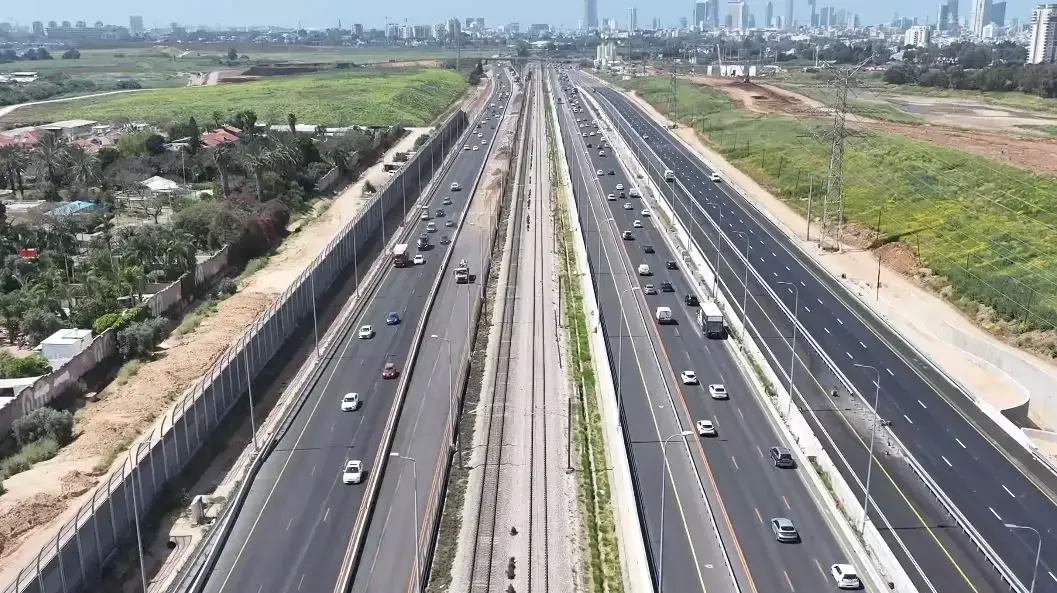It started off well: The pickup truck came quickly that day, sometime in the summer of 1980. Only about seven minutes, the passengers had been waiting at one of the many stops in the city, as the carpooling turned around the corner. Even a taxi would hardly have been faster.
It should be a short drive, just a few blocks away. But when the passengers had boarded, the mini-bus initially took a completely different direction - to pick someone up in the next village before returning to the actual destination. Also on this return trip, a new detour was taken and more passengers collected. Helplessly, the passengers had to watch as they moved further and further away from their destination.
Protesting with the driver? Pointless. Because not he determined the order of the stops to be approached - but a computer in a remote headquarters. Instead of being at the desired destination after five minutes, the bus ride lasted almost an hour.
photo gallery
18 pictures
Historical Ridesharing Services: Call me!So it should have happened then, when the "R-bus" and the "call bus" were sent to Germany's roads, reported among others bus driver Ralf Völkers. For what ridesharing makes possible today was already tested in two small towns 40 years ago: Wunstorf in Lower Saxony and Friedrichshafen in Baden-Württemberg started pilot projects at the end of the 1970s to revolutionize public transport.
The "little greens" are coming
What is today suitable as a business model for urban passengers was at that time an attempt to save local traffic, especially in more rural areas; There he had lost in view of the rapidly increasing individual traffic steadily more attractive. R-Bus and Rufbus were the companions that should help in the oncoming computer age.
For this purpose, all old bus lines were radically abolished and a pure ordering system introduced: bus driving "on demand". Ariane Brockmann then worked in the Wunstorfer R-Bus headquarters. It was called by all those who did not use the call boxes newly built at many stops, which were directly connected to the central computer. After entering the driving desire appeared on Brockmanns screen stop, street side, bus number and departure time. She then told the callers. Those who used instead the Rufsäulen got printed directly a receipt.
Airbus Corporate Heritage
Information material of call bus systems
Brockmann recalls that the computer technology of the time was monstrous: the mainframe computers alone would have filled two rooms of about 20 square meters in size. The minibuses - affectionately called the "little greens" because of their color - were connected to the control center via radio. In the vehicles, the drivers received instructions on which stop to drive next and how many passengers were waiting there.
At a snail's pace on the freeway
Ralf Völkers was one of those bus drivers in a new mobility era. He can even remember certain minibuses in Wunstorf. At the depot he would have liked to grab the "HM 2792" because he had a radio.
Technically, the used buses of the time were all modern. For Wunstorf VW supplied some box-shaped transporter; in Friedrichshafen Mercedes minibuses were used. The later models, mostly by Neoplan, were color-new, but a little underpowered: climbs managed the fully occupied minibuses sometimes only with 20 kilometers per hour, recalls bus driver Völkers. Thorsten Mues drove as a student on the R-Bus and can remember something similar: The failing automatic transmission of the bus would have suddenly switched back on the Wunstorfer Hochstraße from sixth to first gear.
Airbus Corporate Heritage
Rufbus in the eighties
Friedrichshafen was a few months ahead of Wunstorf: in December 1977, the first call bus arrived on Lake Constance, in August 1978 the first R-bus on the Steinhuder Meer. Both systems were very similar, but the armaments companies MBB and Dornier, which today merged into Airbus, independently started to implement the idea of intelligent local traffic. The projects were funded with federal and state funding; most of the funding went through the Federal Ministry of Research and Technology.
Postcards instead of app
For the passengers, this meant a complete rethink: changing stops, changing directions and bus numbers to get to the same destination. This was sometimes confusing and followed a very different logic than the line buses. Certain trips at fixed times, such as to school or work, could even be registered long-term by postcard. Today, an app would be enough.
Despite initial skepticism, most of Friedrichshafen and Wunstorfer took the news quickly. Many are enthusiastic about using the new public transport systems - children also like to simply have fun. But that was no fun for the bus drivers, because they had to set off for every ride.
At first, everything worked surprisingly well, say contemporary witnesses. The problems began when the test operation was extended to other urban areas. In Wunstorf, the waiting times at the stops were still reasonable. In Friedrichshafen, however, two years after the start of the experiment, the critical point was reached: Instead of initially 500 wanted to drive 3000 passengers daily with the 20 busses.
ghost buses
Often that meant: wait, wait, wait. Up to 45 minutes. The system even canceled travel requests due to overload. The travel times were in both cities regularly to Vabanquespiel: Because there were no fixed lines and routes more, a trip with R and Rufbus was hard to plan. A hoped-for short trip could degenerate into an odyssey at any time. The frustrated passengers were therefore always alert. Is it perhaps worth it to get out of the station earlier instead of risking another detour?
"People were not yet ready for this system," believes Ralf Völkers. Because many passengers did not get off at the stops that they had specified in the system before driving, the buses were already partially empty, although the computer further instructed the bus driver to navigate to the booked destination stops. That put the drivers in a bind.
If they gave themselves these seemingly meaningless detours, the system could get completely out of step. If they stuck to their specifications, they sometimes drove past unoccupied buses to people waiting at other stops - causing trouble and incomprehension. It even happened that bus drivers suddenly started to sing loudly or whistled because they assumed they were "empty" again, and only then realized with a start that another passenger was still on board, recalls Völkers.
The evaluations after months of trial operation were devastating in Wunstorf and Friedrichshafen: driving minibuses like shared taxis did not work in a larger urban area with many passengers. The systems failed due to their own success. The more passengers used the demand buses, the more chaotic the offer became. So: many things back to the beginning.
Only when the operators moved away from the maxim of complete flexibility and again integrated conventional bus connections, the system could be used in the area. The buses drove back on fixed routes, only remote stops were driven to order. Also changes between different lines belonged again to the concept. Pure on-demand service was only available in off-peak hours - at night or on Sundays.
Ahead of time
Thanks to these reforms and improved software, the public transport in the two test cities worked well again. "Within a short time you were at your destination," recalls Thorsten Mues. There were hardly any complaints, reports Ariane Brockmann, and if they did, they usually turned to late departure times.
And yet came the final out: subsidies ran out, requests to the mass transit systems were missing, the market showed no interest. Gradually, the call bus systems were restored to classic lines. In Friedrichshafen and Wunstorf drove from the nineties again only ordinary buses.
"The buses were ahead of their time," says Ralf Völkers. At that time, for a while, people could guess the future of mobility in two German small towns - a future that now seems to become reality.









